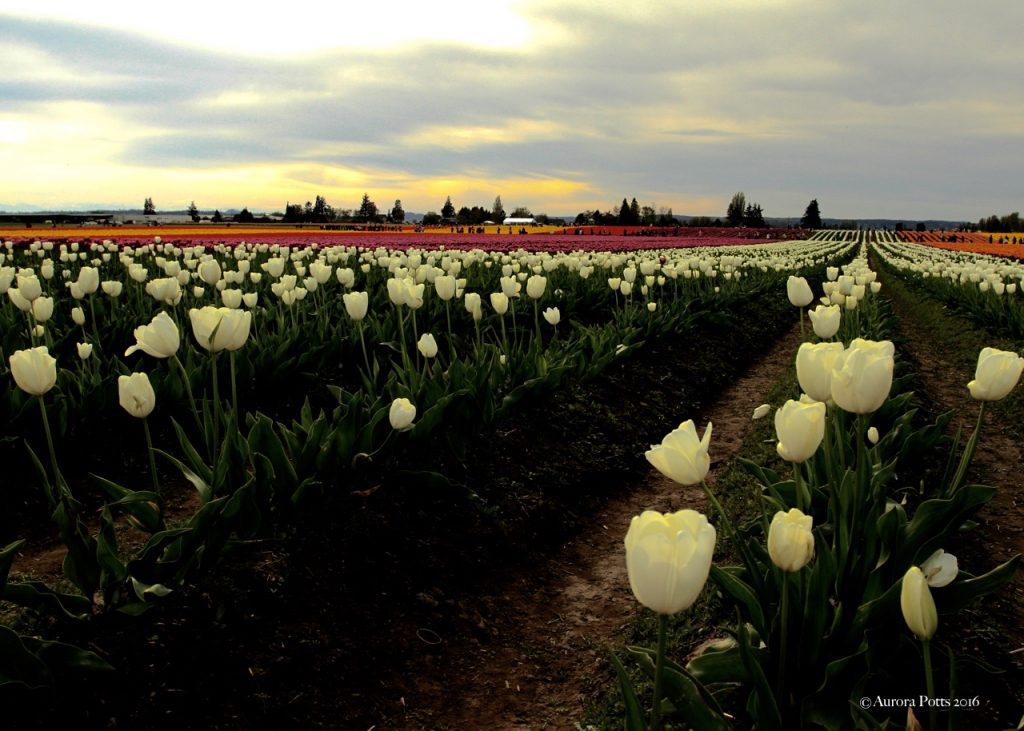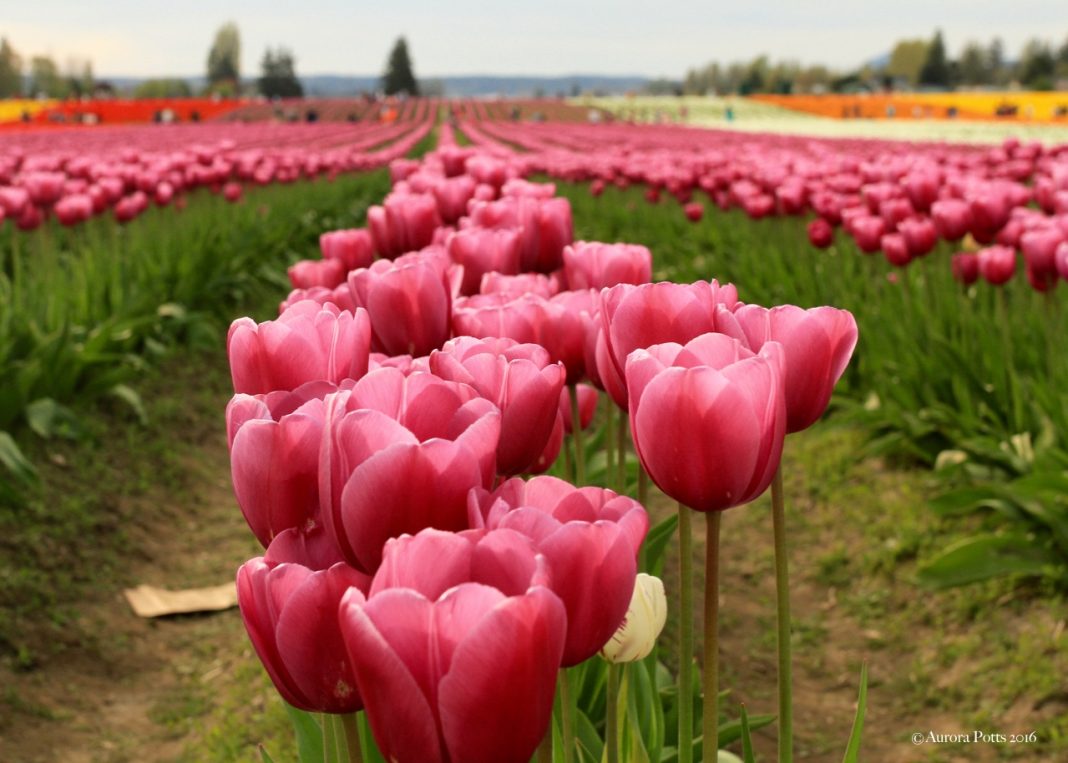Every spring, Skagit County erupts with color as hundreds of tulips bloom, a sure sign of warmer weather. Our county is famous for the annual Skagit Valley Tulip Festival, which celebrates these bright flowers. But why tulips? To answer that, one needs to look back more than 60 years, to 1957, when Anthony DeGoede, a 21-year-old from Holland, moved to Mount Vernon.
The Makings of Tulip Town
Anthony met and married Jeanette, a local gal, and the two of them originally raised tulips for wholesale. The DeGoede’s picked their tulips in Calhoun Road Field. They noticed cars stopping all the time to admire the tulips. “Gosh, this is quite an attraction,” Jeanette says reminiscing.

Those that stopped were not just admires, they also wanted to buy. So, the DeGoedes decided to start selling directly to the consumers. There was no money to be made sticking with wholesale anyway, according to Jeanette. Their first tulip stand was established in 1983. It was an old strawberry stand they borrowed from Billy Joe Dean, a local dairy farmer and artist. Billy Joe Dean painted their first beautiful sign and invited people to walk amongst the tulips. In homage to him, different artists have the privilege of painting Tulip Town’s poster annually.
The DeGoedes noticed they were developing a traffic problem and relocated their stand to their home property and made a parking lot.
In 1984, the Mount Vernon Chamber of Commerce also noticed the vast crowds coming to admire and purchase tulips, so they created the Skagit Valley Tulip Festival. In 1994, the festival separated from the Chamber and became its own entity.

Now, The Tulip Festival Board is in charge of Tulip Town’s social media and promotions. Tulip Town offers a variety of attractions beyond strolling through a field of vibrantly colored tulips. You can take a trolley ride around the festival grounds, visit the art gallery, shop at the gift shop, check out the Veterans Memorial Garden honoring all vets, fly a kite, sip an espresso or munch on a snack. “There’s a lot going on at Tulip Town,” Jeanette surmises.
Importing Holland’s Best Tulips
Holland is the tulip capital of the world. During World War II, Ottawa, Canada housed the Dutch queen for five years while she hid from the Germans. Upon the queen’s safe return to Holland after the war, Holland sent Ottawa 40,000 tulip bulbs. The tulip became the world’s peace flower from then on.

Holland develops all new varieties of tulips through a process called hybridization. Hybridizing is the processes of combining two different colors to make a new variety. It takes three or four years to develop a hybrid tulip into a flower. The first year is just a seed, the second or third year develops a stem and leaves, then finally the third or fourth year, the plant blossoms beautiful petals. You never know what color the tulip is going to be until the flower blooms.
Anthony has several brothers in Holland who help recommend good varieties for Tulip Town. Here in Mount Vernon, Prater Garten is a section of Tulip Town that showcases new varieties imported from Holland. If the tulip variety does well in the Prater Garten, the DeGoedes keep it.
The Angelique is one variety of tulip that Jeanette notes as a favorite. They are pink and full-bodied with double petals. Another very similar, but slightly more modern favorite of Jeanette’s is the Fiona. She describes it as very sweet and pretty. However, Jeanette’s ultimate favorite tulip is the Fringe Rhapsody. Every flower is a different color. She describes it as a phenomenal tulip bulb and says the petals are fringed on the outside with a beautiful array of color. “It’s really different and unusual,” Jeanette elaborates.

Tulips: A Year Round Labor of Love
Jeanette describes their labor revolving around Tulip Town as continuous. After the festival, the DeGoedes and their staff, approximately 12 people, must take down and store every item that supports Tulip Town. While their warehouse functions as a grading line during the festival, during the summer it turns into a bulb warehouse. The DeGoedes then harvest their tulip bulbs and transform their gift shop into a bulb store during autumn. Jeanette says they plant over two million tulips annually.




































